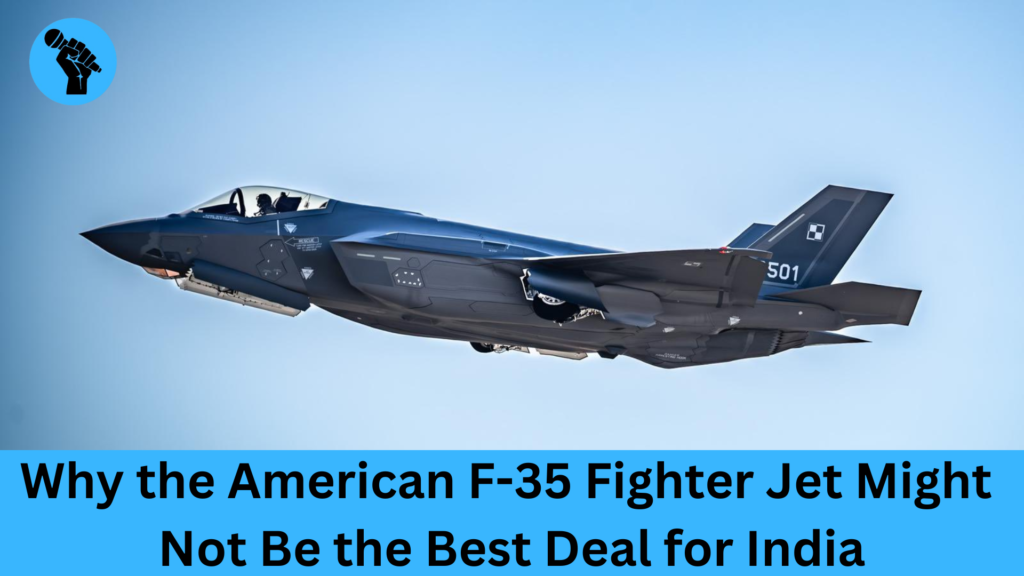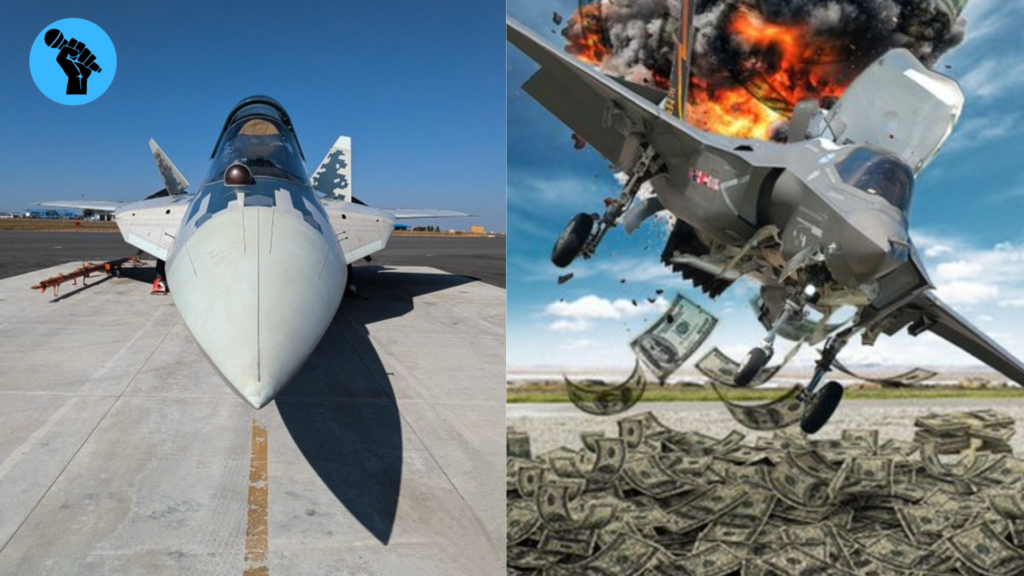
India’s prospective purchase of the American F-35 fighter aircraft has been at the center of heated discussion. Although the F-35 is a state-of-the-art, fifth-generation stealth fighter, there are arguments put forward by experts that it is not the ideal choice for India. A variety of reasons ranging from operational expenditures to strategic needs and production limitations suggest that the Russian Su-57 would prove to be a more suitable alternative.
Dependence on the U.S. for Service and Maintenance
One of the significant disadvantages of buying the F-35 is India’s total reliance on Lockheed Martin and the U.S. for maintenance and spare parts. The F-35 will not be produced in India, as opposed to the Su 57, which Russia has offered to produce domestically. This implies that maintenance, upgrades, and logistical support for the F-35 will continue to be in American hands, restricting India’s strategic autonomy.
Aero India: American F-35 Fighter Jet vs Russian Su-57

At the Aero India show, two planes hogged the limelight: the American F-35 and the Russian Su-57. The previous mention of supplying India with F-35 aircraft by former U.S. President Donald Trump was noted, while Russia has formally proposed the Su-57. India needs to carefully weigh whether the F-35 fits its defense strategy.
Strategic Considerations: Offensive vs Defensive
India has traditionally pursued a defensive military doctrine compared to an offensive one. The F-35 is primarily meant for offensive use, such as deep penetration attacks, reconnaissance, and surveillance. The Su-57, on the other hand, is designed for air defense and defending against threats in national airspace. Based on India’s current strategy, the Su-57 seems to be a better fit.
Differences in Design Philosophy
Russia planned the Su-57 with its large geographical region and the requirement to neutralize air threats in its territory. This makes it a very good aircraft for defense operations. Lockheed Martin, on the contrary, created the F-35 with long-range missions and air superiority in hostile territories in mind.
Stealth Capabilities: Which Aircraft is More Stealthy?
Both of the jets incorporate stealth technology, but the F-35 boasts a major lead in radar cross-section (RCS). The RCS of the F-35 is only 0.0015 square meters, which is almost invisible to the radar of the enemy. The Su-57, however, has an RCS of between 0.1 and 0.5 square meters, which is easier to detect from some angles.
Radar and Tracking Systems
While the F-35 is superior in stealth, the Su-57 possesses an advanced radar system that can detect stealth aircraft. With five radars, three X-band AESA radars, and two L-band radars, the Su-57 possesses a superior ability to target the F-35 at a distance. This may well cancel out some of the benefits of the F-35’s stealth.
Cost Factor: A Major Consideration
The price of procuring and maintaining the F-35 is much higher compared to the Su-57. The US fighter aircraft is around 70% pricier than the Russian fighter. Furthermore, the F-35’s operational expenses in terms of maintenance and fuel consumption are also higher. If the Indian Air Force (IAF) selects the Su-57, it would be able to afford a larger number of aircraft, which would improve overall combat preparedness.
Which Jet is Superior?
It is difficult to decide which of the jets is better, as both planes are designed for various purposes. If India sticks with its defensive approach, then the Su-57 would be the more rational decision. But if India wants to go with an offensive strategy in the future, then the F-35 would be a suitable choice. Besides that, political considerations are also essential—selecting the F-35 would reflect a closer bond with the U.S., and selecting the Su-57 would enhance relations with Russia.
India’s Indigenous Fighter Jet Program
India has been developing its own fifth-generation stealth fighter, the Advanced Medium Combat Aircraft (AMCA). AMCA was on display at Aero India, indicating India’s dedication to indigenous defense technology development. Nevertheless, AMCA will not be operational until 2032-2034. With this timeline in mind, India might still have to buy an interim fighter, making the F-35 vs. Su-57 discussion even more pertinent.
The Global Defense Market and India’s Position
With one of the world’s largest armed forces, India is a key player in the global defense market. As the country strengthens its military capabilities, global defense manufacturers are eager to secure contracts. During Aero India, while American officials promoted the F-35, Russian representatives made their case for the Su-57. Simultaneously, Indian Prime Minister Narendra Modi’s visit to the U.S. saw discussions on deepening defense ties, including potential fighter jet deals.
India must make a challenging choice between the American F-35 and the Russian Su-57. The F-35 provides better stealth and offensive capabilities, but the Su-57 is more in line with India’s current defense strategy and is less expensive. Furthermore, India’s long-term vision of creating its own fifth-generation fighter jet complicates the matter further. The decision will ultimately rely on India’s changing military strategy, geopolitical alliances, and cost factors.










More Stories
India Appears Grander from Space, Says Astronaut Shubhanshu Shukla in Video Call with PM Modi
Calcutta Law College Gang Rape Case: Police Arrest Security Guard, Fourth Accused in Shocking Campus Crime
Hyderabad Couple Arrested for Live Streaming Sexual Acts on Mobile App to Earn Easy Money